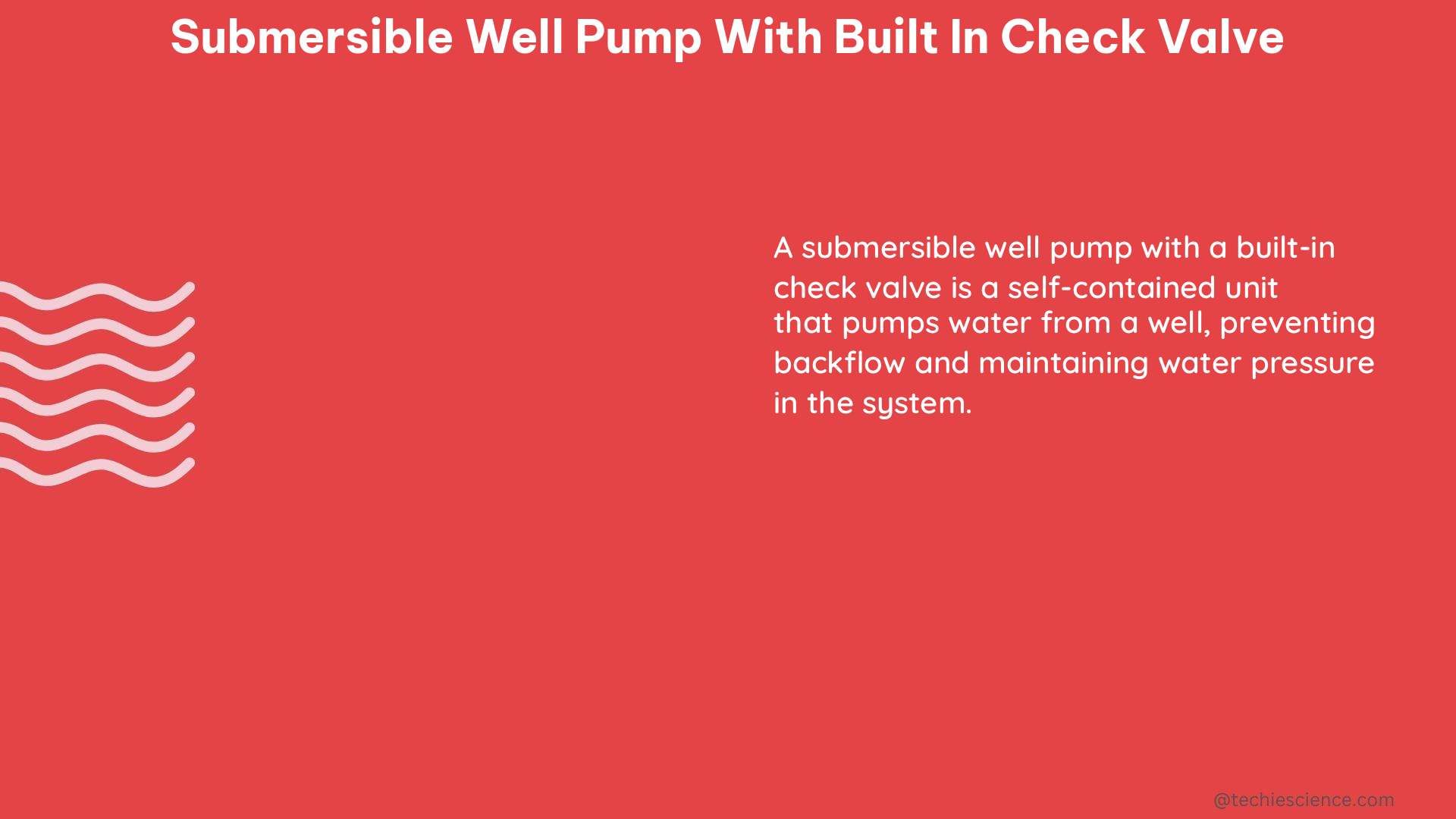A submersible well pump with a built-in check valve is a specialized piece of equipment designed for deep well applications, typically in wells deeper than 120 feet. This type of pump is engineered to prevent water from flowing back into the well when the pump is not in operation, ensuring efficient and reliable water delivery.
Understanding the Importance of the Built-in Check Valve
The built-in check valve is a crucial component of the submersible well pump, located at the pump’s discharge head. This valve serves to maintain the vacuum below it, preventing water from flowing back into the well when the pump is turned off. This is particularly important in deep well applications, where a standard jet pump would not be effective.
Recommended Installation of Additional Check Valves

While the built-in check valve is essential, it is recommended to install an additional check valve after every 200 feet of pipe. This staged approach to check valve installation helps to reduce hydraulic shock, which can otherwise lead to premature wear and tear on the valves, the pump, and the associated piping.
Flomatic’s Recommendations for Proper Installation
Flomatic, a leading manufacturer of valve technology and manufacturing, emphasizes the importance of properly installing multiple submersible check valves to minimize long-term risks and damage to the pump. The ideal recommended location for the first check valve is one pipe length above the submersible pump, where the flow is more laminar and isolated from the turbulent conditions near the pump.
The Importance of High-Quality Check Valves
The use of high-quality check valves is vital for the correct usage of submersible pump system applications. A common misconception is that a single submersible check valve is sufficient for the entire system. However, staging check valves at even intervals along the riser pipe helps to reduce hydraulic shock in stages, protecting the lifespan of the valves, the pump, and the associated pipes.
Technical Specifications of Submersible Well Pump with Built-in Check Valve
| Specification | Value |
|---|---|
| Well Depth | Designed for wells deeper than 120 feet |
| Check Valve Location | Built-in at the pump’s discharge head |
| Additional Check Valve Recommendation | Install after every 200 feet of pipe |
| Check Valve Quality | High-quality check valves are vital for correct usage |
| Check Valve Staging | Reduces hydraulic shock, protecting lifespan of components |
DIY Installation of Submersible Well Pump with Built-in Check Valve
- Turn off the power supply to the well pump.
- Remove the well cap and lower the pump retrieval tool into the well.
- Attach a rope or chain to the pump retrieval tool and lower it until it hooks onto the pump.
- Pull the pump to the surface and disconnect it from the electrical supply.
- Inspect the pump for any damage or wear.
- Install the new pump with the built-in check valve, ensuring that it is securely attached to the electrical supply.
- Install additional check valves after every 200 feet of pipe.
- Test the pump to ensure that it is working correctly.
- Turn the power supply back on.
By following these steps, you can ensure that your submersible well pump with a built-in check valve is properly installed and functioning at its best, providing reliable and efficient water delivery for your deep well application.
References:
- Terry Love Plumbing & Remodel DIY & Professional Forum
- Tameson – Well Pump Check Valve
- Flomatic – Submersible Check Valves Installation: When, Where, Why
- JustAnswer – Typically, what check valve is built into a submersible well pump?
- DoItYourself.com – Check Valve for Submersible Well Pump

The lambdageeks.com Core SME Team is a group of experienced subject matter experts from diverse scientific and technical fields including Physics, Chemistry, Technology,Electronics & Electrical Engineering, Automotive, Mechanical Engineering. Our team collaborates to create high-quality, well-researched articles on a wide range of science and technology topics for the lambdageeks.com website.
All Our Senior SME are having more than 7 Years of experience in the respective fields . They are either Working Industry Professionals or assocaited With different Universities. Refer Our Authors Page to get to know About our Core SMEs.